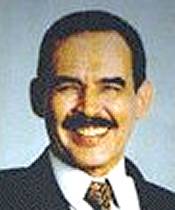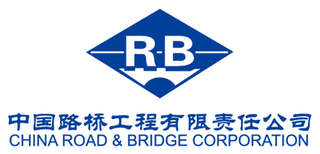This article relies largely or entirely on a single source .(December 2021) |
Bofal is a small town in southern Mauritania. There are phosphate deposits in the vicinity. It lies near the southern border formed by the Senegal River
This article relies largely or entirely on a single source .(December 2021) |
Bofal is a small town in southern Mauritania. There are phosphate deposits in the vicinity. It lies near the southern border formed by the Senegal River
In 2007, it was proposed to build a railway from Bofal to the coast at Nouakchott to export the phosphate. [1] There are adjacent phosphate deposits in Senegal.

Citizens of Mauritania have limited access to transportation. The single-line railroad serves mining interestes with very occasional ad hoc passenger services. Apart from two infrastructural road developments there few paved roads.

Senegal's first President, Léopold Senghor, advocated close relations with France and negotiation and compromise as the best means of resolving international differences after Senegal's independence from its status as a French colony. To a large extent, the two succeeding presidents, Abdou Diouf and Abdoulaye Wade, have carried on Senghor's policies and philosophies. Senegal has long supported functional integration among French-speaking West African states through the West African Economic and Monetary Union.
Transport in Western Sahara is very limited by sea, road and air with camels being the primary means of transportation in the desert area. Road transport by buses remain the major mode of transportation. The longest conveyor belt in the world is 100 kilometres (62 mi) long, from the phosphate mines of Bu Craa to the coast south of Laayoune. The belt moves about 2,000 metric tons of rock containing phosphate every hour from the mines to El-Aaiun, where it is loaded and shipped.

Mauritania, a country in the Western Region of the continent of Africa, is generally flat, its 1,030,700 square kilometres forming vast, arid plains broken by occasional ridges and clifflike outcroppings. Mauritania is the world’s largest country lying entirely below an altitude of 1,000 metres (3,300 ft). It borders the North Atlantic Ocean, between Senegal and Western Sahara, Mali and Algeria. It is considered part of both the Sahel and the Maghreb. A series of scarps face southwest, longitudinally bisecting these plains in the center of the country. The scarps also separate a series of sandstone plateaus, the highest of which is the Adrar Plateau, reaching an elevation of 500 metres or 1,640 feet. Spring-fed oases lie at the foot of some of the scarps. Isolated peaks, often rich in minerals, rise above the plateaus; the smaller peaks are called Guelbs and the larger ones Kedias. The concentric Guelb er Richat is a prominent feature of the north-central region. Kediet ej Jill, near the city of Zouîrât, has an elevation of 915 metres or 3,002 feet and is the highest peak.

Mali is a landlocked nation in West Africa, located southwest of Algeria, extending south-west from the southern Sahara Desert through the Sahel to the Sudanian savanna zone. Mali's size is 1,240,192 square kilometers.

Maaouya Ould Sid'Ahmed Taya is a Mauritanian military officer who served as the President of Mauritania from 1984 to 2005. During his presidency, he pursued policies of Arab nationalism while deepening ties with the United States.

Saint Louis or Saint-Louis, is the capital of Senegal's Saint-Louis Region. Located in the northwest of Senegal, near the mouth of the Senegal River, and 320 kilometres (200 mi) north of Senegal's capital city Dakar, it has a population officially estimated at 258,592 in 2021. Saint-Louis was the capital of the French colony of Senegal from 1673 until 1902 and French West Africa from 1895 until 1902, when the capital was moved to Dakar. From 1920 to 1957, it also served as the capital of the neighboring colony of Mauritania.

Thiès is the third largest city in Senegal with a population officially estimated at 320,000 in 2005. It lies 72 km (45 mi) east of Dakar on the N2 road and at the junction of railway lines to Dakar, Bamako and St-Louis. It is the capital of Thiès Region and is a major industrial city.

The Mauritania–Senegal Border War was a conflict fought between the West African countries of Mauritania and Senegal along their shared border from 1989 to 1991. The conflict began around disputes over the two countries' River Senegal border and grazing rights. The conflict resulted in the rupture of diplomatic relations between the two countries for several years, the creation of thousands of refugees from both sides, as well as having a significant impact on domestic Senegalese politics. Ethnic tension, political/economic crises in Senegal, and competition for natural resources between the two nations were the main underlying causes of this conflict.
Matam is the capital town of the Matam Region in north-east Senegal, and lies on the Sénégal River on the border with Mauritania. In the census of 2002, Matam had 14,620 inhabitants. In 2007, according to official estimates, the population of the town had increased to 17,324.
Iron ore production in Africa is dominated by South Africa, Mauritania and Algeria. Many countries possess iron ore deposits that are as yet untapped/unmined. Countries and companies currently involved in production are listed here; measurements are in tonnes per annum(year).

China Road and Bridge Corporation (CRBC), a subsidiary of Fortune Global 500 company China Communications Construction Company (CCCC), focuses on global civil engineering and construction projects such as highways, railways, bridges, ports, and tunnels. Growing out of the Foreign Aid Office of the Ministry of Communications of China, CRBC and its predecessors have been executing projects since 1958. In 1979, CRBC was formally established and entered the international contracting market. The parent entity, CCCC, was formed through the combination of CRBC and China Harbour Engineering Company Ltd (CHEC) in 2005.
Legat is a small town in southern Mauritania near the Senegal River.
Aere Mbar is a town and commune in the Brakna Region of south-western Mauritania. It is located near the border with Senegal.
Aghchorguitt is a town and commune in the Brakna Region of southern-western Mauritania.
St. Eleanors is a neighbourhood in the city of Summerside, Prince Edward Island, Canada.

China–Senegal relations refer to the foreign relations between China and Senegal.

India–Mauritania relations are the international relations that exist between the Republic of India and the Islamic Republic of Mauritania. Neither country has a resident ambassador.
The geology of Guinea-Bissau is oldest in the east and becomes younger toward the west, with sediments from the past 66 million years nearer the coast. Some rock units in the northeast are as much as 680 million years old and throughout the geologic past Guinea-Bissau was influenced by the Mauritanide Belt orogeny and was submerged or partially submerged as a marine shelf or river delta for most of its existence.
The geology of Mauritania is built on more than two billion year old Archean crystalline basement rock in the Reguibat Shield of the West African Craton, a section of ancient and stable continental crust. Mobile belts and the large Taoudeni Basin formed and filled with sediments in the connection with the Pan-African orogeny mountain building event 600 million years ago and a subsequent orogeny created the Mauritanide Belt. In the last 251 million years, Mauritania has accumulated additional sedimentary rocks during periods of marine transgression and sea level retreat. The arid country is 50% covered in sand dunes and has extensive mineral resources, although iron plays the most important role in the economy.
16°25′00″N13°48′00″W / 16.41667°N 13.80000°W